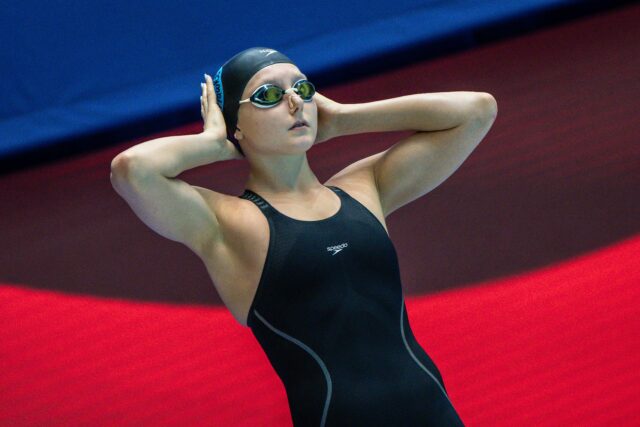Welcome to Eye on AI! AI reporter Sharon Goldman here, filling in for Jeremy Kahn. In this edition… Sam Altman’s AI paradox…AI has quietly become a fixture of advertising…Silicon Valley’s AI deals are creating zombie startups…sources say Nvidia working on new AI chip for China that outperforms the H20.
I was not invited to Sam Altman’s cozy dinner with reporters in San Francisco last week (whomp whomp), but maybe that’s for the best. I have trouble suppressing exasperated eye rolls when I hear peak Silicon Valley–ironic statements.
I am not sure I could have controlled myself when the OpenAI CEO said that he believes AI could be in a “bubble,” with market conditions similar to the 1990s dotcom boom. Yes, he reportedly said, “investors as a whole are overexcited about AI.”
Yet, over the same meal, Altman also apparently said he expects OpenAI to spend trillions of dollars on its data center buildout in the “not very distant future,” adding that “you should expect a bunch of economists wringing their hands, saying, ‘This is so crazy, it’s so reckless,’ and we’ll just be like, ‘You know what? Let us do our thing.’”
Ummm…what could be more frothy than pitching a multi-trillion-dollar expansion in an industry you’ve just called a bubble? Cue an eye roll reaching the top of my head. Sure, Altman may have been referring to smaller AI startups with sky-high valuations and little to no revenue, but still, the irony is rich. It’s particularly notable given the weak GPT-5 rollout earlier this month, which was supposed to mark a leap forward but instead left many disappointed with its routing system and lack of breakthrough progress.
In addition, even as Altman speaks of bubbles, OpenAI itself is raising record sums. In early August, OpenAI secured a whopping $8.3 billion in new funding at a $300 billion valuation—part of its plan to raise $40 billion this year. That figure was five times oversubscribed. On top of that, employees are now poised to sell about $6 billion in shares to investors like SoftBank, Dragoneer, and Thrive, pushing the company’s valuation potentially up to $500 billion.
OpenAI is hardly an outlier in its infrastructure binge. Tech giants are pouring unprecedented sums into AI buildouts in 2025: Microsoft alone plans to spend $80 billion on AI data centers this fiscal year, while Meta is projecting up to $72 billion in AI and infrastructure investments. And on the fundraising front, OpenAI has company too — rivals like Anthropic are chasing multibillion-dollar rounds of their own.
Wall Street’s biggest bulls, like Wedbush’s Dan Ives, seem unconcerned. Ives said Monday on CNBC’s “Closing Bell” that demand for AI infrastructure has grown 30% to 40% in the last months, calling the capex surge a validation moment for the sector. While he acknowledged “some froth” in parts of the market, he said the AI revolution with autonomous systems is only starting to play out and we are in the “second inning of a nine-inning game.”
And while a bubble implies an eventual bursting, and all the damage that results, the underlying phenomenon causing a bubble often has real value. The advent of the web in the ’90s was revolutionary; The bubble was a reflection of the massive opportunities opening up.
Still, I’d be curious if anyone pressed Altman on the AI paradox—warning of a bubble while simultaneously bragging about OpenAI’s massive fundraising and spending. Perhaps over a glass of bubbly and a sugary sweet dessert? I’d also love to know if he fielded tougher questions on the other big issues looming over the company: its shift to a public benefit corporation (and what that means for the nonprofit), the current state of its Microsoft partnership, and whether its mission of “AGI to benefit all of humanity” still holds now that Altman himself has said AGI “is not a super-useful term.”
In any case, I’m game for a follow-up chat with Altman & Co (call me!). I’ll bring the bubbly, pop the questions, and do my best to keep the eye rolls at bay.
Also: In just a few weeks, I will be headed to Park City, Utah, to participate in our annual Brainstorm Tech conference at the Montage Deer Valley! Space is limited, so if you’re interested in joining me, register here. I highly recommend: There’s a fantastic lineup of speakers, including Ashley Kramer, chief revenue officer of OpenAI; John Furner, president and CEO of Walmart U.S.; Tony Xu, founder and CEO of DoorDash; and many, many more!
With that, here’s more AI news.
Sharon Goldman
sharon.goldman@fortune.com
@sharongoldman
FORTUNE ON AI
Wall Street isn’t worried about an AI bubble. Sam Altman is – by Beatrice Nolan
MIT report: 95% of generative AI pilots at companies are failing – by Sheryl Estrada
Silicon Valley talent keeps getting recycled, so this CEO uses a ‘moneyball’ approach for uncovering hidden AI geniuses in the new era – by Sydney Lake
Waymo experimenting with generative AI, but exec says LiDAR and radar sensors important to self-driving safety ‘under all conditions’ – by Jessica Matthews
AI IN THE NEWS
More shakeups for Meta AI. The New York Times reported today that Meta is expected to announce that it will split its A.I. division — which is known as Meta Superintelligence Labs — into four groups. One will focus on AI research; one on “superintelligence”; another on products; and one on infrastructure such as data centers. According to the article’s anonymous sources, the reorganization “is likely to be the final one for some time,” with moves “aimed at better organizing Meta so it can get to its goal of superintelligence and develop AI products more quickly to compete with others.” The news comes less than two months after CEO Mark Zuckerberg overhauled Meta’s entire AI organization, including bringing on Scale AI CEO Alexandr Wang as chief AI officer.
Madison Avenue is starting to love AI. According to the New York Times, artificial intelligence has quietly become a fixture of advertising. What felt novel when Coca-Cola released an AI-generated holiday ad last year is now mainstream: nearly 90% of big-budget marketers are already using—or planning to use—generative AI in video ads. From hyper-realistic backdrops to synthetic voice-overs, the technology is slashing costs and production times, opening TV spots to smaller businesses for the first time. Companies like Shuttlerock and ITV are helping brands replace weeks of work with hours, while tech giants like Meta and TikTok push their own AI ad tools. The shift raises ethical questions about displacing creatives and fooling viewers, but industry leaders say the genie is out of the bottle: AI isn’t just streamlining ad production—it’s reshaping the entire commercial playbook.
Silicon Valley’s AI deals are creating zombie startups: ‘You hollowed out the organization.’ According to CNBC, Silicon Valley’s AI startup scene is being hollowed out as Big Tech sidesteps antitrust rules with a new playbook: licensing deals and talent raids that gut promising young companies. Windsurf, once in talks to be acquired by OpenAI, collapsed into turmoil after its founders bolted to Google in a $2.4 billion licensing pact; interim CEO Jeff Wang described tearful all-hands meetings as employees realized they’d been left with “nothing.” Similar moves have seen Meta sink $14.3 billion into Scale AI, Microsoft scoop up Inflection’s founders, and Amazon strip talent from Adept and Covariant—leaving behind so-called “zombie companies” with little future. While founders and top researchers cash out, investors and rank-and-file staff are often left stranded, sparking growing concern that these quasi-acquisitions not only skirt regulators but also threaten to choke off AI innovation at its source.
Nvidia working on new AI chip for China that outperforms the H20, sources say. According to Reuters, Nvidia is developing a new China-specific AI chip, codenamed B30A, based on its cutting-edge Blackwell architecture. The chip, which could be delivered to Chinese clients for testing as soon as next month, would be more powerful than the current H20 but still fall below U.S. export thresholds—using a single-die design with about half the raw computing power of Nvidia’s flagship B300. The move comes after President Trump signaled possible approval for scaled-down chip sales to China, though regulatory approval is uncertain amid bipartisan concerns in Washington over giving Beijing access to advanced AI hardware. Nvidia argues that retaining Chinese buyers is crucial to prevent defections to domestic rivals like Huawei, even as Chinese regulators cast suspicion on the company’s products.
EYE ON AI RESEARCH
Study finds AI-led interviews improved outcomes. A new study looked at what happens when job interviews are run by AI voice agents instead of human recruiters. In a large experiment with 70,000 applicants, people were randomly assigned to be interviewed by a person, by an AI, or given the choice. Surprisingly, AI-led interviews actually improved outcomes: applicants interviewed by AI were 12% more likely to get job offers, 18% more likely to start jobs, and 17% more likely to still be employed after 30 days. Most applicants didn’t mind the change—78% even chose the AI when given the option, especially those with lower test scores. The AI also pulled out more useful information from candidates, leading recruiters to rate those interviews higher. Overall, the study shows that AI interviewers can perform just as well as, or even better than, human recruiters—without hurting applicant satisfaction.
AI CALENDAR
Sept. 8-10: Fortune Brainstorm Tech, Park City, Utah. Apply to attend here.
Oct. 6-10: World AI Week, Amsterdam
Oct. 21-22: TedAI San Francisco. Apply to attend here.
Dec. 2-7: NeurIPS, San Diego
Dec. 8-9: Fortune Brainstorm AI San Francisco. Apply to attend here.
BRAIN FOOD
Do AI chatbots need to be protected from harm?
AI lab Anthropic has introduced a new safety measure in its latest Claude models, which empowers the AI to terminate conversations in extreme cases of harmful or abusive interaction. The feature activates only after repeated redirections fail—typically for content requests involving sexual exploitation of minors or facilitation of large-scale violence. The company is notably framing this as a safeguard not principally for users, but for the model’s own “AI welfare,” reflecting an exploratory stance on the machine’s potential moral status.
Unsurprisingly, the idea of granting AI moral status is contentious. Jonathan Birch, a philosophy professor at the London School of Economics, told The Guardian he welcomed Anthropic’s move for sparking a public debate about AI sentience—a topic he said many in the industry would rather suppress. At the same time, he warned that the decision risks misleading users into believing the chatbot is more real than it is.
Others argue that focusing on AI welfare distracts from urgent human concerns. For example, while Claude is designed to end only the most extreme abusive conversations, it will not intervene in cases of imminent self-harm—even though a New York Times opinion piece yesterday urged such safeguards, written by a mother who discovered her daughter’s ChatGPT conversations only after her daughter’s suicide.













